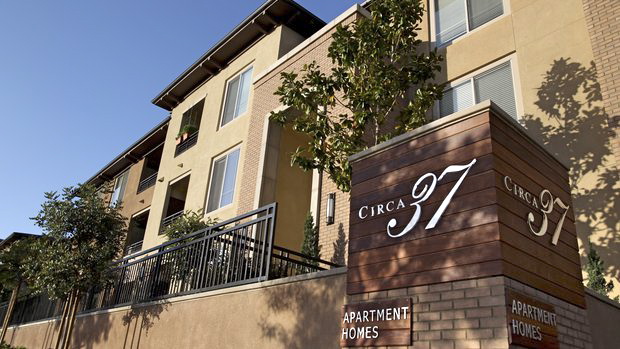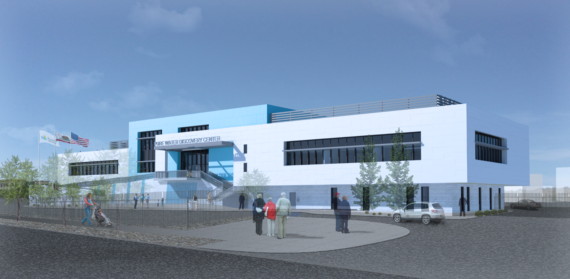Daily Business Report-June 3, 2015
Circa 37 apartments in Mission Valley
New Units Drive Up Rental
Vacancies in San Diego County
Average rent is $1,514 — Up from $1,260 a year ago
The vacancy rate for residential rental units in San Diego County now stands at 4.1 percent, a slight increase from fall 2014, according to the San Diego County Apartment Association’s Spring 2015 Vacancy and Rental Rate Survey.
The vacancy rate — up from 2.3 percent last fall and 2.7 percent this time last year — was driven higher in part by rising supply from newly constructed units entering the local market. In Mission Valley, for example, the first phase of a 612-unit apartment community opened early this year. Other communities, in San Marcos, Kearny Mesa, Downtown and elsewhere, also have opened recently. Multiple military deployments early in 2015 may also have contributed to a higher vacancy rate.
“While our growing economy is keeping demand strong, we are now seeing a better balance between supply and demand,” said SDCAA Executive Director Alan Pentico. “With many new units still in the development pipeline, we expect to see supply continue to rise. This is essential as we strive to make up for the many years when the region was not developing enough to meet demand.”
In the city of San Diego, the vacancy rate is 4.2 percent, up from 2.2 percent last fall and 2.7 percent this time last year. The South Bay region had the highest vacancy rate, at 5.1 percent, up from 2.4 percent in the last survey. East County had the next highest vacancy rate, at 4.7 percent, up from 2.3 percent last fall. North County’s vacancy rate was 3.8 percent, up from 2.5 percent last fall.
Among specific unit types, studios had the lowest vacancy rate, at 2.8 percent. One-bedroom units had a vacancy rate of 4.4 percent; two-bedroom units had a vacancy rate of 4 percent; three-bedroom units had a vacancy rate of 4.1 percent.
The survey found the weighted average rent across all units types in the county was $1,514. That’s up from the fall 2014 survey, which showed a weighted average rent of $1,321, and from the spring 2014 survey, which showed a weighted average rent of $1,260.
“We still have pent-up demand, despite the modest vacancy increase, and that is reflected in rising rents,” Pentico said.
Average rent was $974 for studio units; $1,301 for one-bedroom units; $1,609 for two-bedroom units; and $1,943 for units with three or more bedrooms. Because response levels varied in certain ZIP codes, it was not possible to draw clear conclusions about the overall direction of change in rent levels. However, many new units are considered high-end and many existing properties are undergoing renovations as they turn over — work that often was delayed during the recession, according to SDCAA.
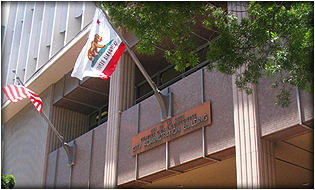
City Buildings Are Crumbling,
In Need of ‘Action,’ Report Finds
The City Administration Building is among 115 facilities owned by the city of San Diego found to be in poor condition, according to results of an assessment that is scheduled to be presented to the City Council’s Infrastructure Committee today.
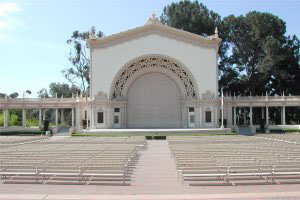
The city has been conducting assessments of a variety of types of public assets in order to get a handle on the scope of a backlog of capital improvement projects estimated to be around $3.9 billion. The report to be presented to the committee covers 274 facilities owned and occupied by the city.
Other reports have looked at roads, sidewalks and parks. Partial results of an assessment of leased buildings will be included in Wednesday’s presentation.
The 50-year-old City Hall, on C Street in Downtown San Diego, has nearly $69 million in repair needs, and would cost more than $157 million to replace, according to the report.
Other facilities listed in the report as being in poor condition are the Spreckels Organ Pavilion in Balboa Park, the San Diego Fire-Rescue Department’s training tower, the Mission Bay Information Center, 14 recreation centers, nine fire stations, five libraries and four lifeguard stations — including the headquarters.
Numerous other facilities fell into the “poor” category, including the North Park Senior Center, the rangemaster’s office at the police shooting range, tool
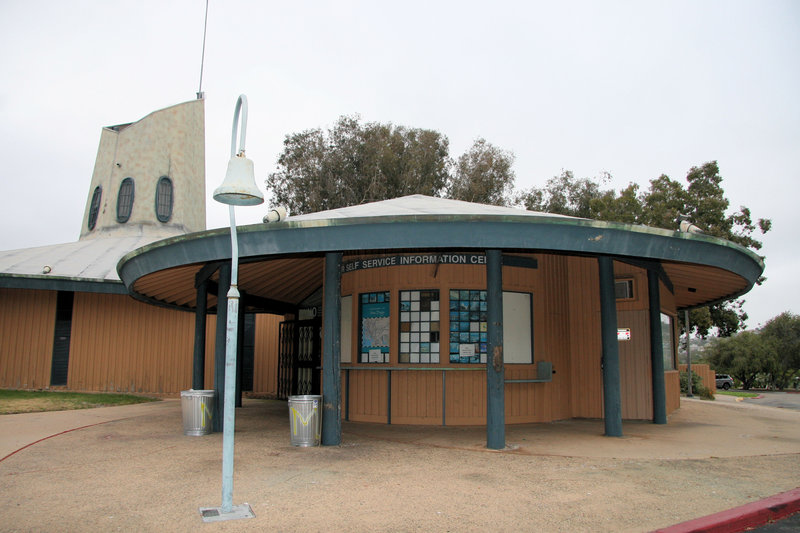
sheds and other storage facilities in Balboa Park, and numerous “comfort stations” — city terminology for public restrooms.
“The new data in this assessment underscores why we are developing an infrastructure financing plan to help address the city’s unfunded backlog of repairs,” committee Chairman Mark Kersey said. “The citizens of San Diego deserve to have libraries, recreation centers and other facilities reflecting our status as a world-class city.”
The authors of the report said the results point to a “significant need for action” but noted that the findings aren’t out of line with the average age of the buildings examined, which was 35 years old. The interior finish, electrical, and heating and air conditioning problems detected in such buildings fit with their age, they said.
The authors recommended the city develop an action plan for the facilities that were found to be in poor condition, including deciding whether to repair or replace them. They also suggested creating funding plans, setting a goal of reducing the average condition rating within five years, establishing a preventative maintenance program and setting a schedule for regular condition assessments.
— City News Service
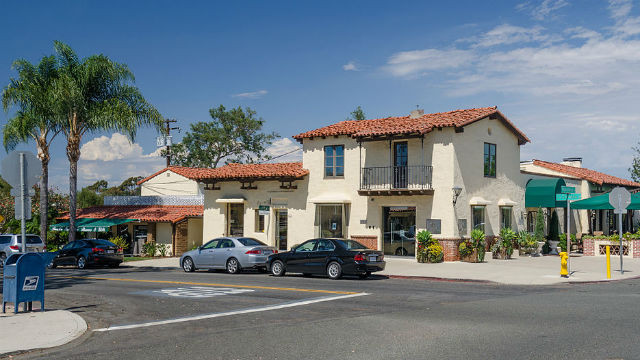
Despite Drought, Rancho Santa Fe
Water Use Increases 9 Percent
Rancho Santa Fe residents, criticized for using large amounts of water despite the record drought, used 9 percent more in April compared to the 2013 baseline, according to new state data released Tuesday.
The Santa Fe Irrigation District serving exclusive Rancho Santa Fe and Solana Beach, and the city of Escondido with a 20 percent increase, were the only two districts in San Diego County that reported more water use.
Figures released by the California Water Resources Control Board showed that the Rancho Santa Fe district delivered 426.6 gallons of water per person, per day. Only one other district in the state — Casistas Municipal Water District in Ventura County — came close to such high usage. By comparison, customers in San Diego used 66.0 gallons per day and Los Angeles residents 75.2 gallons.
Last month, the state ordered SFID customers to cut back their use 36 percent from 2013 totals, and the front page of the agency’s website includes calls for conservation.
“Though many of our customers have cut water use, overall, our water use in our community rose in April rather than fell,” said the district’s Jessica Parks. “The Santa Fe Irrigation District Board of Directors recognizes that we need an aggressive program to drive water usage down.”
She said they are “actively reaching out” to the community to get them to reduce their water consumption.
The only other water use increase recorded in April in the region was the city of Escondido, which climbed 20 percent.
Conservation efforts in San Diego County in April were led by the San Dieguito Water District in Encinitas, which reduced water deliveries by 24 percent.
Other declines in April, according to the state data:
- Lakeside Water District — 15 percent
- City of Poway — 13 percent
- California-American Water Company San Diego District, Vallecitos Water District and Rincon Del Diablo Municipal Water District — 12 percent
- Padre Dam Water District in Santee — 11 percent
- Carlsbad Municipal Water District — 10 percent
- City of Oceanside and Valley Center Municipal Water District — 9 percent
- Helix Water District and Ramona Municipal Water District — 8 percent
- Fallbrook Public Utility District — 7 percent
- Otay Water District — 6 percent
- Rainbow Municipal Water District — 5 percent
- City of San Diego and Vista Irrigation District — 4 percent
- Olivenhain Municipal Water District — 2 percent
— Times of San Diego/City News Service
Google Quietly Operating Sensor
Startup Following Stealthy Buyout
Google has acquired a San Diego startup that invented new sensor technology for precisely tracking changes in direction, according to two industry experts who would only discuss the deal anonymously, reports Bruce V. Bigelow, Xconomy San Diego.
The Mountain View, CA-based technology giant agreed to buy Lumedyne Technologies in November for about $85 million, one expert said, just months after Lumedyne demonstrated a working prototype of its innovative accelerometer technology.
The sensor is presumably intended for use in smart phones and robotics, but it could have broad applications in navigation. For example, Lumedyne’s CEO gave a talk on the future of motion sensors in the automotive industry at the 2013 Automotive Sensors and Electronics Expo in Detroit.
Lumedyne’s technology offers a big advantage over conventional accelerometers because so far it has been far more precise—showing little “drift” from a device’s actual location, another expert said.
Click here for the full story.

